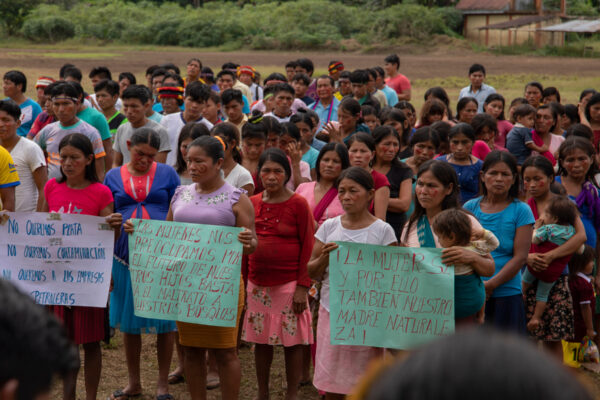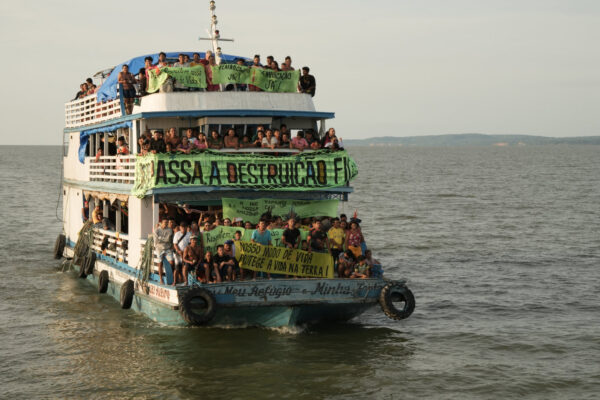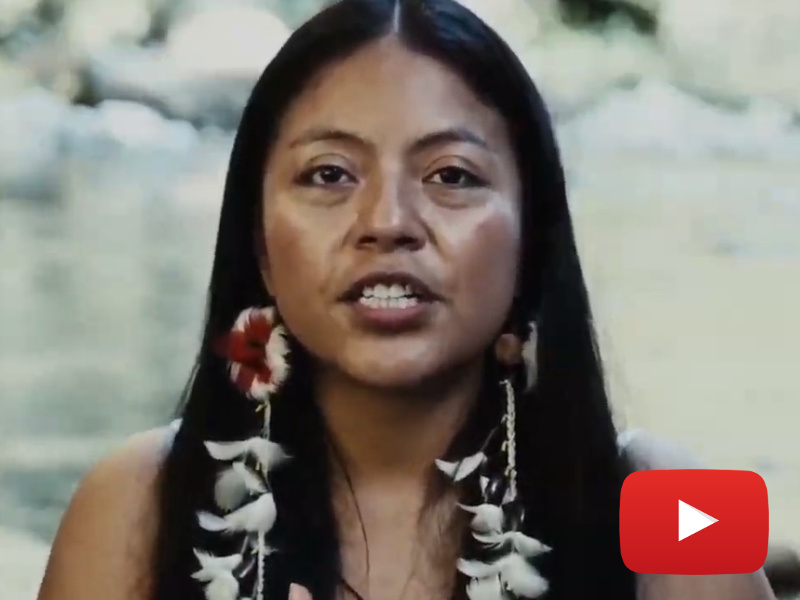
If the Belo Monte disaster set a grim paradigm for human rights and environmental protection in the Amazon, then the manic race to dam the nearby Tapajós River confirms that the Brazilian government will stop at nothing to produce energy at any and all cost.
When Brazil’s Ministry of Mines and Energy (MME) announced the December 15th auction for the construction of the São Luiz do Tapajós mega-dam, representatives of threatened indigenous Munduruku communities responded with outrage, calling out the government’s failure to consult them and promising to resist its destructive aims on their territory. One day later, the MME cancelled the auction, citing the need to “adjust” the “indigenous component studies” of the project’s polemic Environmental Impact Assessment.
Following this blow to the MME’s credibility, technicians with Brazil’s federal indigenous agency FUNAI denounced the project’s socio-environmental “unviability”, given its grave and irreversible impacts on the indigenous peoples of the Tapajós River, which include the flooding and forced displacement of native communities. According to technicians, the indigenous component studies “do not respond to basic questions” such as the project’s violation of Brazil’s Constitution (Article 231, paragraph 5), which prohibits the uprooting of indigenous peoples from their lands.
The MME’s announcement of the dam’s auction to a construction consortium was particularly reckless considering that São Luiz do Tapajós has yet to receive an environmental license. Under Brazilian law, the nation’s environmental agency IBAMA must approve a project’s environmental license before the government can award a concession to builders.
This week FUNAI went a step further, announcing that the agency would “reject” the viability of the São Luiz do Tapajós dam. However, FUNAI has no authority to paralyze the project. Its decision will be directed to IBAMA for analysis, which will then decide upon the project’s viability and – if approved – how threatened indigenous communities will be compensated for the loss of their ancestral home.
Steamrolling human rights in defiance of its Constitution, the Brazilian government has assured that the “indigenous component” of the dam’s Environmental Impact Assessment contains a provision for the forced removal of indigenous villages. This sinister strategy is unfolding against an apprehensive backdrop among the Munduruku, who fear their communities will be flooded without even having been consulted about the project, much less had a say in its planning.
Immediately following FUNAI’s revelation, the government’s grotesque dealings took on an air of surrealism as Maurício Tolmasquim, the head of Brazil’s Energy Research Company (EPE), claimed that heightening tensions were due to a “misunderstanding”, arguing that planners “never thought of auctioning [the dam] without FUNAI’s approval.” Furthermore, Mr. Tolmasquim asserted: “there is problem of comprehension among indigenous communities, who think that the decision [to build the dam] has already been made.”
Could the indigenous “problem of comprehension” stem from the government’s initial aim to ram through the project’s auction without an environmental license, or perhaps from the government’s flagrant refusal to consult threatened indigenous groups on the dam’s egregious impacts? Perhaps the Mundukuru “misunderstood” the government’s benevolence when it sent bellicose military escorts to Munduruku territory against their approval, allowing technical teams to produce the contested environmental impact assessment?
Mr. Tolmasquim went on to promise that the dam’s approval would pass through all necessary procedures, including the consultation of indigenous peoples, even if these delay the dam’s energy production timeline. His assurances are exceedingly doubtful, however. They are more likely meant to pander to Dilma Rousseff’s attempts to bolster her green credentials going into this weekend’s presidential elections.
The pronouncements of FUNAI and weak rebuttal of Mr. Tolmasquim demonstrate the irreconcilable clash between the São Luiz do Tapajós dam and the fundamental rights of indigenous peoples in a manner that recalls the approval and construction of the Belo Monte dam. In that case, the government simply disregarded the recommendations of its own technical staff from both FUNAI and IBAMA, recklessly undermining the checks and balances in place to vet the viability of large development projects.
While truly clean energy alternatives are within reach and would render new Amazon dams unnecessary, the grim lessons of Belo Monte and the race to dam the Tapajós River demonstrate that the Brazilian government aims to produce energy at any cost. As such, the recent tragi-comic waffling of Brazil’s energy planners could simply be a calm before the storm.













